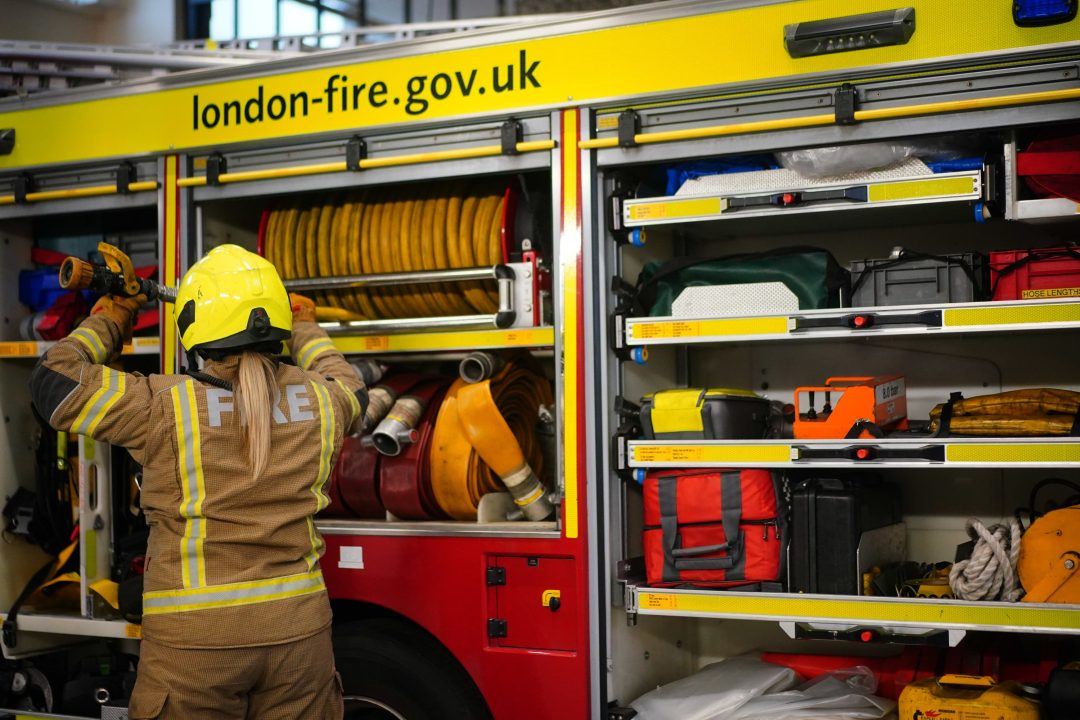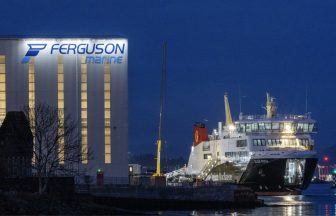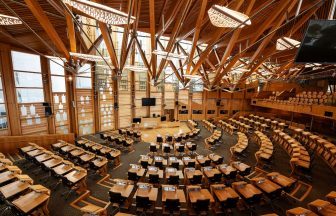More than three quarters of Scotland’s fire service estate has decontamination facilities deemed to be “poor or bad”, the service has said as more than £800m of work is needed.
Analysis by the Scottish Fire and Rescue Service (SFRS) and sent to the Criminal Justice Committee ahead of a meeting on Wednesday laid bare the financial issues facing the service’s estate which chief officer Ross Haggart described as “insurmountable”.
In total, the backlog amounts to more than £800m of work needed across fire stations, vehicles, equipment and IT infrastructure, the document said, despite an increase in budgets this year.
Speaking before the committee on Wednesday, the Fire Brigade Union (FBU) raised concerns about the lack of adequate decontamination facilities available to firefighters after returning from duty.
Asked about the situation in a later session, SFRS director of finance and contractual services Sarah O’Donnell said: “In terms of what percentage of our estate is deemed to be fit for purpose in terms of contaminant control, we have done an overall assessment around both condition and suitability of the estate.
“Suitability is the area that would touch on contaminant control as well as dignified facilities and general suitability in terms of storage areas, garaging the vehicle, etcetera.
“The figure is 77% that are not compliant with these suitability standards, that have been assessed relative to our standard station design.”
The document provided to the committee ahead of the meeting went further.
“This is likely to worsen when our estate is assessed against the standards that are being developed by the National Fire Chiefs Council (NFCC) for contaminant control,” it said.
Current levels of capital funding – which rose by 31.5% to £43m this year – mean “it will take years” to fix the problems, while the estate continues to deteriorate.
In an earlier session on Wednesday, Colin Brown, an executive council member for Scotland with the FBU, said: “Currently, firefighters are attending incidents, being unable to decontaminate post-incident in any meaningful way, being covered through the course of their work in carcinogenic and toxic fire effluents and chemicals and having to take that home to their families in order to shower and decontaminate.
“This is a well known issue, the FBU funded the research that has proven beyond scientific question that is a fact – firefighters are more likely to contract and die from avoidable cancers than the majority of the population.
“This is a public health emergency to the same extend as the asbestos emergency that was recognised through the building industry.”
FBU research conducted last year suggested firefighters were 1.6 times more likely to die from cancer than the general public.
The SFRS, Brown said, “cannot spend its way out” of the situation with its current budget, as he called for more investment from Government.
But his call comes less than 24 hours after Finance Secretary Shona Robison announced cuts of about £500 million this year to balance the budget.
“It is unacceptable that firefighters are going to their work, unable to shower, unable to access dignified facilities,” Brown added.
Speaking during the hearing, Haggart said the greatest single challenge it faces is the work required on facilities across the country.
“We have got a significant backlog with our capital, which essentially covers our estate of 365 fire stations across Scotland, our vehicles, our equipment, personal protective equipment and ICT (information and communications technology),” he said.
“We don’t like to talk about the overall capital backlog figure, to be perfectly honest, because we recognise it is insurmountable.
“If you’re talking about figures in excess of £800 million, we realise that is an unrealistic figure, but we do believe that we require an increased and sustained investment within our capital allocation so that we can overcome the challenges that we’ve got.”
Currently, 14 stations still have panels made from reinforced autoclaved aerated concrete (Raac), which need to be replaced, and the submission from the SFRS showed 29% of the service’s fleet of 1,687 vehicles are older than the assumed replacement age – and 32% of the so-called “heavy fleet” which includes fire appliances.
A Scottish Government spokesperson said: “In an extremely challenging fiscal environment, our investment of £393 million in the SFRS this year – an increase of £29.3 million on last year – enables it to continue to deliver the high standard of services required to keep our communities safe.
“While the allocation of resources is an operational matter for the SFRS, our increased funding will allow the service to invest more in property, fleet and equipment. We have also provided additional funding to enable firefighters to participate in a UK-wide health screening programme.
“We will continue to work closely with the SFRS to ensure everything possible is being done to keep staff and communities safe across Scotland.”
Follow STV News on WhatsApp
Scan the QR code on your mobile device for all the latest news from around the country


 PA Media
PA Media
























